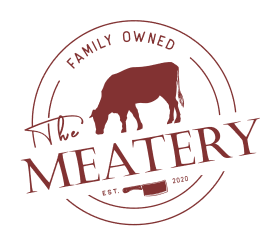Breed And Lineage Of Tajima Cattle
The story of Kobe beef begins with the prestigious Tajima cattle, a specific strain of Japanese Black (Kuroge Washu) cattle. These cattle have a lineage that can be traced back over 1,000 years in Japan's Hyogo Prefecture, where Kobe is the capital city. The Tajima bloodline is carefully maintained through strict breeding programs and regulations.
What makes Tajima cattle truly special is their genetic predisposition to intense marbling, known as shimofuri in Japanese. This marbling consists of intramuscular fat that creates the characteristic snowflake-like pattern throughout the meat. The cattle are bred exclusively in Hyogo Prefecture under strictly controlled conditions, with each animal's lineage meticulously documented.
To qualify as authentic Kobe beef, cattle must meet several criteria:
- Born in Hyogo Prefecture from a Tajima cow
- Raised and processed within Hyogo Prefecture
- Must be a steer (castrated bull) or virgin heifer
- Must possess a specific genetic lineage verified through DNA testing
The breeding process involves careful selection of parent animals to maintain the desired characteristics. Farmers pay particular attention to traits such as marbling potential, temperament, and growth rate. This selective breeding has resulted in cattle that consistently produce meat with exceptional tenderness, flavor, and the signature marbling that Kobe beef is famous for.
Can you get Kobe beef outside of Japan?
While genuine Kobe beef can be found outside Japan, it's extremely rare and strictly regulated. Until 2012, there was actually no authentic Kobe beef exported from Japan. Today, only a small number of countries receive limited quantities of this prestigious meat, and the export process is carefully controlled by the Kobe Beef Marketing and Distribution Promotion Association.
When dining internationally, consumers should be wary of restaurants claiming to serve Kobe beef. Here are the key facts about international availability:
- Only a handful of certified restaurants outside Japan can serve authentic Kobe beef
- Each shipment comes with documentation proving its authenticity
- The meat can be traced back to individual cattle in Hyogo Prefecture
- Annual export quantities are extremely limited
Many restaurants may advertise "Kobe-style" beef or "Wagyu beef," but these are not the same as authentic Kobe beef. To ensure you're getting genuine Kobe beef, look for:
- A certificate of authenticity from the Kobe Beef Marketing Association
- The unique 10-digit identification number for the specific cow
- The distinctive bronze chrysanthemum seal
Kobe Beef Grading System
The grading system for Kobe beef is one of the most stringent in the world, combining both the Japanese meat grading system and additional Kobe-specific criteria. The meat is evaluated on multiple factors:
- Marbling Score (BMS): Must be 6 or higher on a scale of 1-12
- Meat Color and Brightness: Scored on a scale of 1-7
- Firmness and Texture: Must meet specific standards
- Fat Color and Quality: Evaluated for color, luster, and texture
The overall grade is determined by combining these factors, with grades ranging from C1 to A5. To qualify as Kobe beef, the meat must achieve:
- A yield score of A or B
- A quality score of 4 or 5
- A BMS of 6 or higher
Only about 3,000 cattle annually meet these strict criteria to be certified as authentic Kobe beef. Each certified piece receives a unique identification number that can be traced back to the individual animal.
Comparison With Other Wagyu
While Kobe beef is the most famous, it's just one type of Japanese Wagyu. Understanding the differences between various Wagyu varieties helps appreciate what makes Kobe beef unique:
- Matsusaka Beef: From virgin heifers, known for extreme marbling
- Ohmi Beef: One of Japan's oldest beef brands, praised for sweet flavor
- Miyazaki Beef: Known for its cherry-red color and fine marbling
- American Wagyu: Crossbred with Angus cattle, less marbling than Japanese varieties
What sets Kobe beef apart is its:
- Superior tenderness due to unique fat distribution
- Lower melting point of fat (around 77°F/25°C)
- Distinctive umami flavor profile
- Strict adherence to traditional raising methods
How should Kobe beef be eaten?
To fully appreciate Kobe beef's unique characteristics, proper consumption methods are essential. Traditional Japanese experts recommend:
- Eating small portions (4-6 ounces) due to richness
- Serving at medium-rare to medium temperature
- Cutting meat into small, bite-sized pieces
- Pairing with simple sides that won't overpower the beef's flavor
The ideal serving temperature allows the fat to melt slightly, releasing its complex flavors. Many connoisseurs suggest:
- Letting the meat rest at room temperature before cooking
- Using chopsticks to appreciate each bite fully
- Accompanying with light vegetables and rice
- Avoiding heavy sauces that might mask the natural flavors
Kobe Beef Preparation Methods
The preparation of Kobe beef requires specific techniques to maximize its unique qualities. Traditional methods include:
- Teppanyaki: Grilled on a flat iron surface
- Shabu-shabu: Briefly cooked in hot broth
- Sukiyaki: Simmered in a sweet-savory sauce
- Steak: Grilled over high heat
Key preparation guidelines include:
- Using high heat for short cooking times
- Minimal seasoning (usually just salt and pepper)
- Careful temperature control to prevent fat rendering
- Proper resting time before serving
The goal is to preserve the meat's natural flavors while achieving the perfect temperature to melt the intramuscular fat, creating the signature "melt-in-your-mouth" texture that Kobe beef is famous for.









